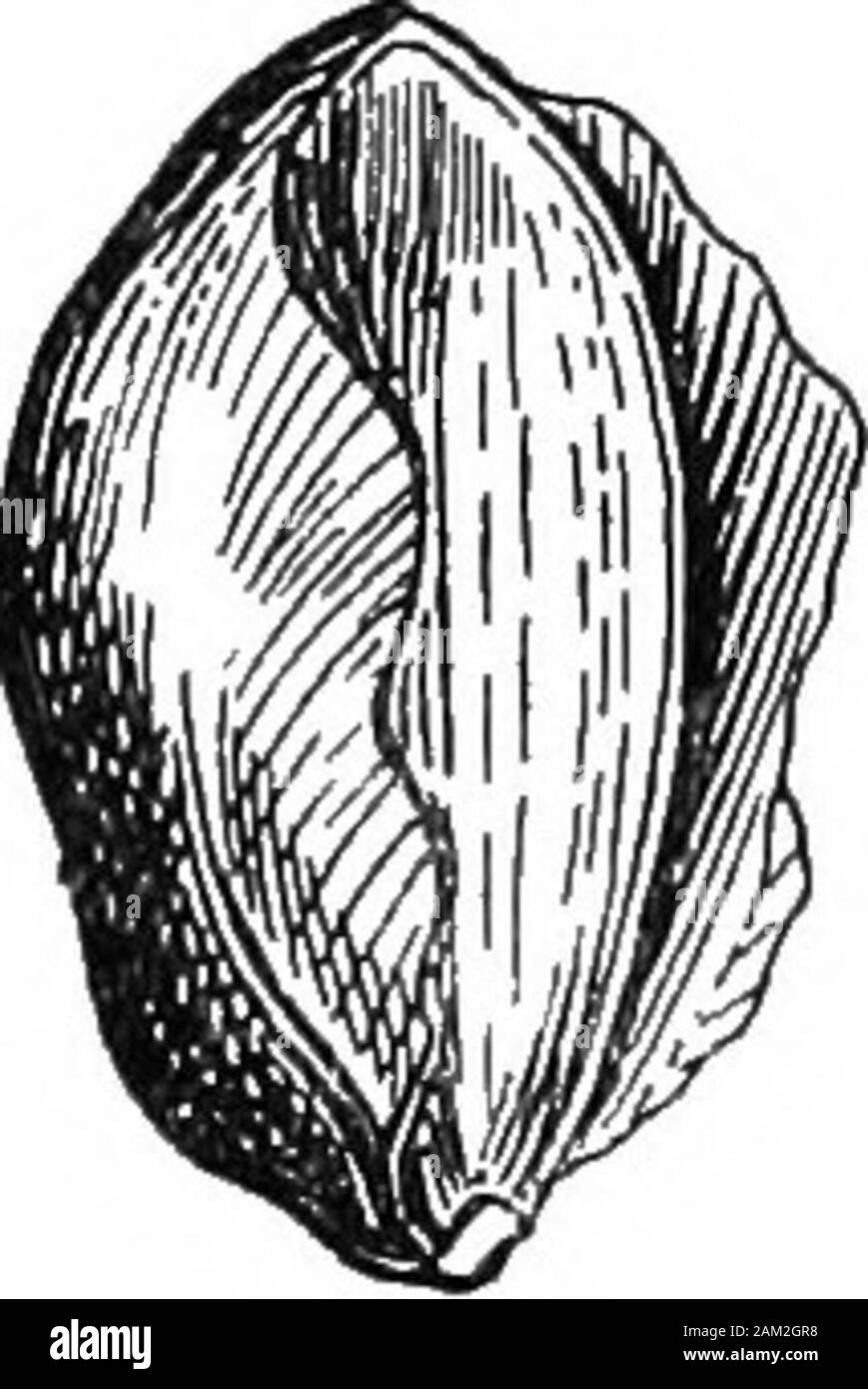British grasses and their employment in agriculture . species are inferior grasses andshould be considered as weedsby the agriculturist. Bromus arvensis, L. (FieldBrome-grass.) (Fig. 67.) An annual or biennial, withentire sheaths which are finelystriated and hairy. Shoot sec-tion round; heel slight; bladesthin, dry, acutely pointed, andhairy on both surfaces. Thereare no auricles, and the liguleis short, thin, and slightlyragged. Flowers in May or June;culms from lj to 3 feet high,with considerably enlargednodes. Panicle rather openand drooping. Spikelets linear-lanceolate, containing aboutnin

Image details
Contributor:
The Reading Room / Alamy Stock PhotoImage ID:
2AM2GR8File size:
7.2 MB (254.2 KB Compressed download)Releases:
Model - no | Property - noDo I need a release?Dimensions:
1293 x 1933 px | 21.9 x 32.7 cm | 8.6 x 12.9 inches | 150dpiMore information:
This image is a public domain image, which means either that copyright has expired in the image or the copyright holder has waived their copyright. Alamy charges you a fee for access to the high resolution copy of the image.
This image could have imperfections as it’s either historical or reportage.
British grasses and their employment in agriculture . species are inferior grasses andshould be considered as weedsby the agriculturist. Bromus arvensis, L. (FieldBrome-grass.) (Fig. 67.) An annual or biennial, withentire sheaths which are finelystriated and hairy. Shoot sec-tion round; heel slight; bladesthin, dry, acutely pointed, andhairy on both surfaces. Thereare no auricles, and the liguleis short, thin, and slightlyragged. Flowers in May or June;culms from lj to 3 feet high, with considerably enlargednodes. Panicle rather openand drooping. Spikelets linear-lanceolate, containing aboutnine flowers. Empty glumesrather unequal, practicallysmooth; the upper and larger one is seven-nerved, and its tip is midway between its base andthe top of the outer palea of the fourth flower of the spikelet.The lower glume is three-nerved. (These last features will serveto distinguish it from B. mollis.) Both glumes have membranous 1 Except B. erectus and B. giganteus in which the awn may be considered asterminal. 2 Except in B. giganteus, see p. 85.. Fig, 68. Seedof Bromus ar-vensis, L. x 5. Fig. 69. Seedof Briza me-dia, L. x 10. 80 Botanical Section [PT I margins, and their keels are slightly serrated on the upperhalf. Seeds. Outer palea 7 to 12 mm. long, smooth or pubescent, broad and expanded above, seven-nerved, with membranousmargins. Its apex is bifid, and it bears a fine, somewhat wavyand finely serrated sub-terminal awn, which is almost as long as